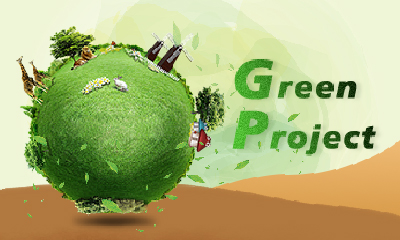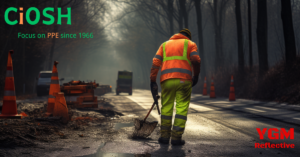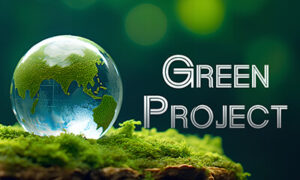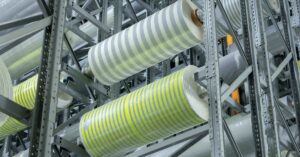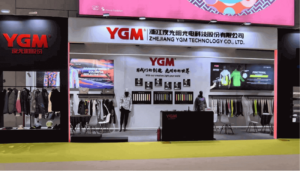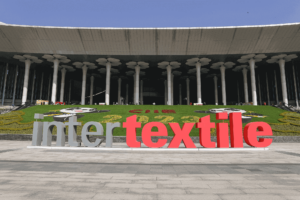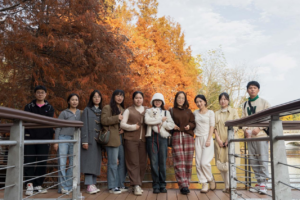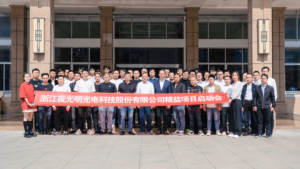Recycle yarn fabric products after consumption(GRS Certified)
YGM has long been committed to creating a green and sustainable environment. To further this commitment, YGM has become certified by the Global Recycled Standard (GRS).
The GRS certification helps to ensure that materials used conform to strict requirements in terms of chains of custody, social and environmental practices, and chemical limitations. It also ensures that all raw materials are purchased and products are produced on the premise of being responsible to consumers, which helps to promote customers’ trust in YGM.
GRS certification reinforces its green philosophy by ensuring that it meets strict sustainability standards. This is fully consistent with YGM’s core mission: YGM is committed to reducing its environmental impact while producing high-quality goods that are safe for both consumers and communities.By doing so, YGM is helping to reduce waste and increase the reuse of valuable resources.
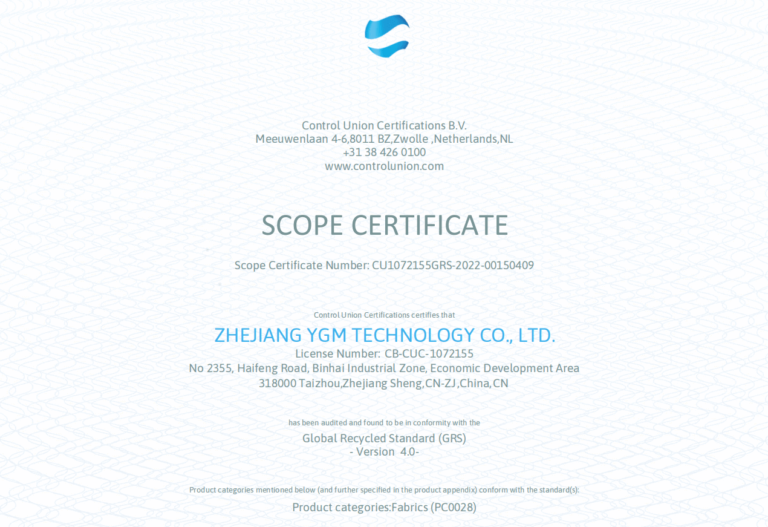
Regenerative Thermal Oxidizer
The RTO system consists of multiple core components such as three or more regenerators, a combustion chamber, and six or more main airflow switching valves.The regenerative chamber is filled with honeycomb ceramic regenerative body which repeatedly stores thermal energy during the incineration process. This stored energy is used to preheat the newly introduced organic exhaust gases, thus stabilizing the furnace temperature.Each combustion chamber is equipped with a proportionally adjusted burner which adjusts its heating capacity automatically based on temperature feedback signals in the furnace through the PID regulator. For added safety, the combustion system also includes an automatic pre-purging before ignition, flame-out protection, overtemperature alarm and automatic fuel supply cut-off over temperature features.
By implementing this advanced thermal oxidizer technology, RTO can effectively treat almost all VOC pollutants with a purification efficiency of up to 99%, significantly reducing YGM emissions to about 12,600 kg/year. In addition, its regenerative process allows for energy conservation by recycling heat from the combustion chamber back to the preheater. Through this method,high temperatures can be maintained and less energy is consumed than with conventional incineration systems. At the same time, this device has been estimated to save energy consumption by up to 1.2 million KW/year, proving its worth as an eco-friendly and reliable treatment method for hazardous waste gases.
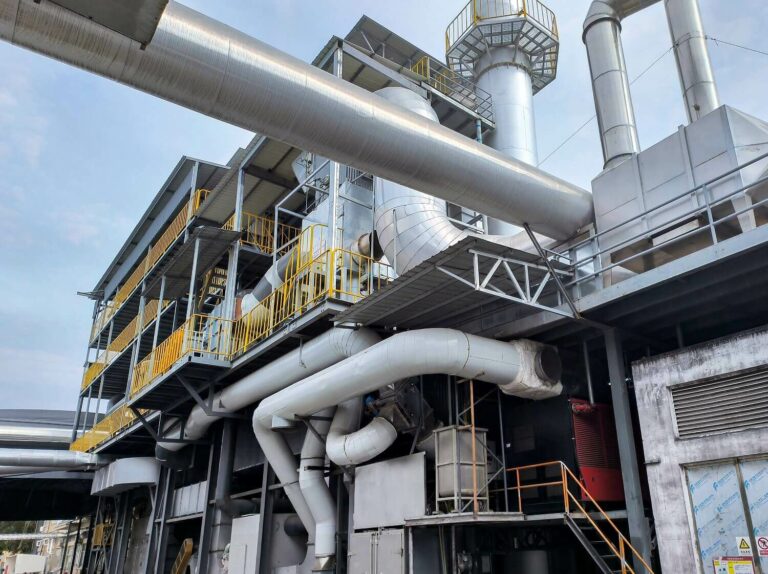
Responding to the SBTi Science Based Carbon Initiative
YGM has implemented several initiatives to achieve Science-Based Targets Initiative. The company has adopted thermal energy recovery via RTO which captures waste heat and converts it into useful energy, such as electricity or hot water. To further reduce its carbon footprint, YGM has also invested in photovoltaic power generation technology that harnesses solar radiation to generate electricity.
In addition, YGM is transitioning away from fuel forklifts by replacing them with electric vehicles that are powered by clean energy sources like wind or solar. To minimize handling energy consumption, the factory layout has been optimized to make sure that materials are moved efficiently and quickly with minimal effort. In addition, the curing amount of the coating process glue is increased while the viscosity is reduced, which can reduce the coating thickness and save energy consumption.
YGM has also implemented a new management system which stipulates that air conditioning can’t be turned on until a certain temperature is reached (above 26 degrees Celsius in summer and below 20 degrees Celsius in winter).This helps reduce energy consumption associated with cooling needs during peak hours when demand is high.
Finally, YGM implemented an innovative water heating system which uses heat generated during air compressor operations instead of relying solely on traditional electricity sources for this purpose. By utilizing existing resources more effectively, they were able to save both money and energy while still meeting their needs onsite.
Water-based PU Instead of Oil-based PU
YGM advocates the replacement of oil-based PU with water-based PU due to its superior environmental performance. Its physical properties may not be as robust as oil-based PU yet, but its green concept and low carbon footprint are attractive to companies looking to reduce their environmental impact. In addition, advances in technology mean that the physical properties of water-based PU are rapidly catching up with oil-based PU and have become an increasingly viable alternative. For all these reasons, YGM encourages companies to switch from using oil-based PU to using water-based PU for their projects and products.
However, consumers can rest assured that replacing oil-based PU with water-based PU has no impact on the performance and quality of the final product, YGM always provides you with the best products.
Green power - the use of photovoltaic power generation
YGM has installed about 6,000-7,000 square meters of solar panels on the roof of the plant in 2022 and started photovoltaic power generation in June. The solar panels provide 300,000 KWH of electricity a month, a third of YGM’s average monthly consumption of 900,000 KWH.The photovoltaic power generation technology is superior to traditional thermal power generation systems in many ways. Solar energy is not only a renewable and clean source of energy, but also one that is abundant and free, so it doesn’t need to consume fuel or create additional pollution. Additionally, the pv system eliminates the need for transmission lines and other infrastructure investments, making it more cost-efficient. The solar system also offers higher electrical quality than traditional sources, as it produces no noise and has a much lower risk of failure than fossil fuels. YGM will benefit from tremendous savings in energy costs while contributing to a cleaner planet.
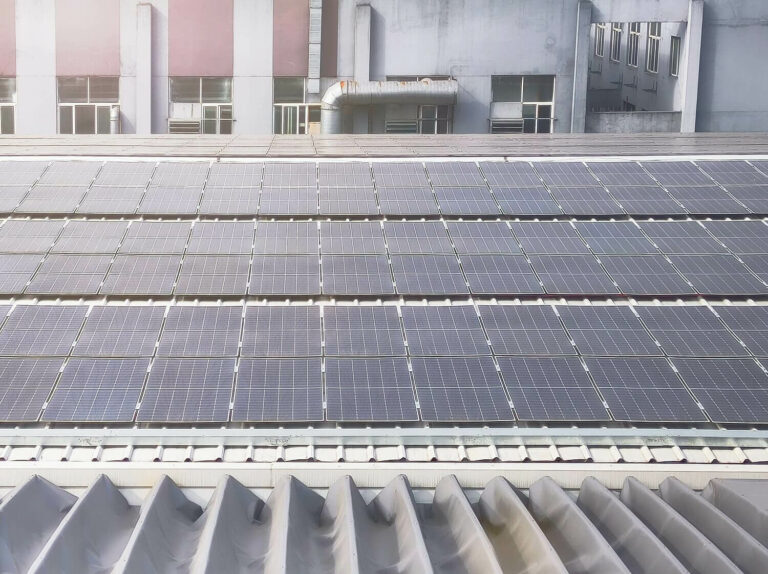
Improve the service life of products
- How to improve the service life of products
YGM strives to improve the service life of its products through various methods such as raw material improvement,production process adjustment,product structure redesign etc. In order to ensure that the product meets customer requirements, YGM has also conducted rigorous testing on its products before it is released to customers.
- Methods for testing the service life of products
In order to evaluate the service life of products, destructive tests such as washing performance test, wear test, bending test, folding test and high and low temperature test are usually used. Washing performance testing involves speaking fabrics through multiple washes to measure how well the colours remain intact whereas abrasion testing measures how much damage is caused when exposed to friction over a period of time. Bending and folding tests help evaluate how well a product holds up when bent or folded while high and low temperature tests determines how well it can withstand sudden changes in temperature over extended periods of time.
- Precautions when using the product
High reflective series: Pay attention to oil stains, scratches, low temperature, acid and alkali solvents.
High luster’s series: Pay attention to oil stains, scratches, low temperature, acid-base solvents, sweat stains.
High luster’s reflective heat transfer vinyl: Pay attention to oil stains, scratches, low temperature, sweat stains, the influence of acid and alkali solvents and hot pressing parameters.
Reflective sheeting: Pay attention to the weather resistance requirements, the process and level of pasting, and the temperature during the stamping process.
